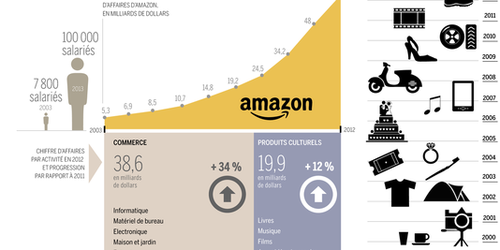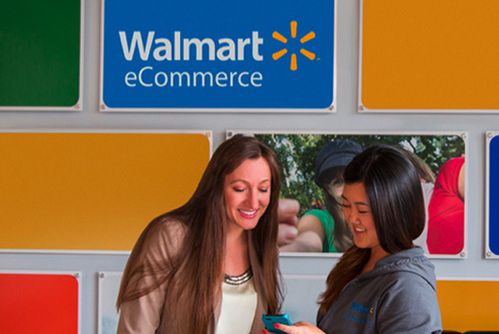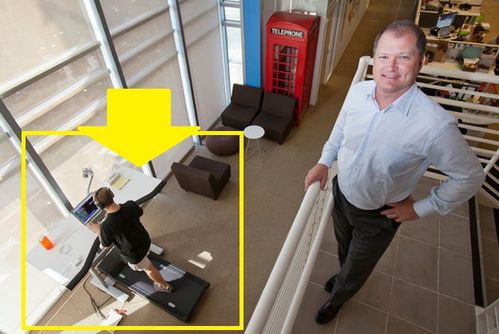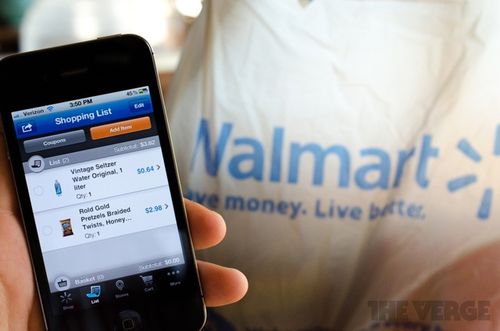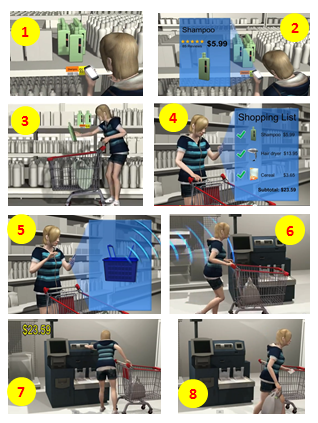OVER THE MANY years I made my living as a restaurant critic, I dined out 5,123 times, not counting the office cafeteria and numerous airport eateries that I described as "fast food served slowly." Whenever people learn about my immoderate profession, they invariably ask, "How did you choose where to go?" My strategy was quite simple, at least in the unplugged 1980s: I asked around. Then came the World Wide Web, with its breathtaking search capabilities and lightning interactivity. This spawned all sorts of restaurant voting sites, as well as a nationwide upsurge of self-anointed restaurant reviewers sounding off around the clock, issuing so many contradictory opinions that they can be more confusing than constructive.
The past decade has seen many tech innovations when it comes to dining out, but no truly life-altering advancements—until now. Mobile technology is revolutionizing the way diners interact with restaurants, for better and worse. While new apps are expanding, accelerating and streamlining the dining experience, the ubiquity of smartphones can eclipse some of the very reasons we eat out: relaxation, discovery, camaraderie and a fleeting escape from our machine-driven lives. In certain respects, mobile devices are also tipping the balance of power from restaurants to consumers—from "Take it or leave it" to "Do what we want, or 1,232 friends will hear about it right now." To be sure, before long, smartphones will do everything short of plucking a mint at the coat check.
“Bypassing the human in this way seems akin to buying World Series tickets and then watching the game on the jumbotron.”
With mobile technology you can search endless options, cross-referenced every which way. All of the larger dining sites—Zagat, Yelp, Urbanspoon and Citysearch among them—have taken the mobile leap. As a result, dining decisions can be increasingly spontaneous, impulsive, collaborative and easy to change at the last minute. I have discussed this trend with restaurateurs where I live, in New York's Hudson Valley, and not all are sanguine about it. They are concerned that this freewheeling new approach could exacerbate every restaurateur's bête noire: no-shows. As it is, on any weekend evening, a typical fine-dining establishment might expect 25% or more of their reserved customers to blow them off, without even bothering to call and cancel. (This is why restaurants overbook.) Then again, reserving electronically can increase accountability. The online reservation service OpenTable, which has more than 28,000 member restaurants and seats more than 12 million diners a month, sends hand-slapping emails to no-shows, and deactivates users after four personal fouls in a year. Perhaps the biggest change in the mobile world is the way in which diners make their decisions. Not only do they search on the run, but they also digitally collaborate with friends in the process—cuisine by consensus.
If you haven't noticed, a lot more restaurants, particularly the hip and crowded, are not accepting reservations. There are two main reasons: It projects that something irresistibly exciting is going on, and tables turn faster, which boosts income. Previously, had you entered a Pamplona-like scene and been quoted a wait time of between an hour and infinity, you would have had two options: Stand around sipping overpriced cocktails, or just stand around. Now mobile apps like NoWait and Diner Connection allow you to check in at the front desk, leave your phone number, then linger wherever you like. The restaurant sends automated text messages updating your status, and guests can communicate with the restaurant in real time. So, if you are, say, having a jovial time of it at a nearby pub, you can push back the booking (or cancel it).
In some locations, chains like Applebee's and Chili's are betting on customers' preference for the convenience and relative anonymity of the touch screen; digital tablets at tables allow one to order food and drinks without so much as consulting the waiter. Maybe it's me, but bypassing the human in this way seems akin to buying World Series tickets and then watching the game on the jumbotron. This timesaving technology is being adopted primarily by casual or chain restaurants, where diners seldom need servers to expound on the laminated menu; it's unlikely we'll see this mode of ordering anytime soon in upscale institutions. "It doesn't work in my situation," declared Kevin Boehm, co-owner of the Chicago-based Boka Restaurant Group, which includes such luxe venues as Balena and GT Fish & Oyster. "When you lose the experience of ordering with somebody who can give you an intelligent answer, you lose, well, hospitality." The place where mobile ordering is gaining ground the fastest is in the carryout and delivery trade, with services like GrubHub and Seamless.
It's at the conclusion of the dining experience that the touch screen is likely to become a more common sight at a wide range of establishments in the next few years. Apps that allow customers to tally and pay their tabs electronically eliminate the process of having a server present the bill, walk away, return for the credit card and then ring it up in the back. Programs like Tabbedout and Cover are competing not only for the casual trade but also for upscale restaurants in situations where time is a concern (think business lunches). OpenTable is testing a mobile payment program in San Francisco with hopes of rolling it out by the end of the year.
Some apps advertise that they can automatically divvy up the check for groups of diners, avoiding the annoying back-and-forth over who had the extra margarita; most offer nifty ways to calculate tips. The question of what percentage is an appropriate reward for servers whose role might soon be redefined as "dish fetchers" is one that, as far as I am aware, no app has yet promised to tackle.
As someone who has happily nibbled his way around the globe, toting the kind of pad that needs no charging, it's easy to dismiss this mobile craze as the height of overkill—like roaring a Maserati to the corner deli. Truth is, back in those lower-tech days, I'd have loved to have had that tip calculator, and the ability to instantly check a waiter's math skills. And who needs lingering in the foyer?
You may not learn the waiter's name and hometown, but he's not going anywhere. Ultimately, no amount of technology will alter the immutable reality: that dining out is, above all, about fun. And what's not fun will sink like a dropped soufflé—something you can watch right at your table, on YouTube.
Mobilize Your Meal
Smartphone apps that aim to enhance your dining experience
Pick a Restaurant
Out on the town but unsure where to eat? Thousands of smartphone-wielding citizen reviewers are here to help. The ubiquitousYelp (free, iOS and Android), which has been around for almost a decade, has the greatest breadth of options and quantity of reviews. Specialized restaurant-only review apps, in particular Urbanspoon (free, iOS and Android), can offer more nuanced guidance for the discerning diner. Along with each restaurant's menu, Urbanspoon includes reviews from users, newspapers and blogs. Devoted users of Foursquare (free, iOS and Android) are beginning to see customized real-time recommendations pop up on their phone: If you're walking through Little Italy, Foursquare can tell you, based on your past check-ins and other Foursquare users' tips, not only which pasta place is worth trying but what you should order once inside. The new pop-up feature is available on all Android devices now and is being rolled out on iOS platforms.
Make a Booking
OpenTable (
free, iOS and Android) is still the go-to app for making a reservation, either far in advance or on a whim. The app tells you when the restaurants nearest you (or in any specified location) have openings and lets you book with a few taps of a finger. If toggling between apps tires you out, you can also access OpenTable's reservation system directly through the Yelp and
Facebook FB -0.78% mobile apps. Beyond offering reviews and tips (like which nearby places have outdoor patios), OpenTable can help you get into an impossible-to-book restaurant at the last minute. "It never hurts to check the day before at the most popular restaurants in case a reservation falls through," said Jocelyn Mangan, OpenTable's vice president of consumer product management. "We send reminders 24 hours in advance, and that tends to be when cancellations happen."
If you still can't get a table at that hot restaurant—or if said restaurant is so hot it doesn't take reservations—you may just have to show up. But thanks to new services likeWaitAway and BuzzTable that are available to restaurants, you no longer have to stand shoved against a crowded bar with a germy buzzer sticking out of your handbag. Instead, you just give your phone number to the host, wander wherever you'd like and you'll get a text message when your table is ready. The NoWait app (free, iOS only), set to launch nationwide in January, takes this convenience one step further, putting the power in diners' hands: You don't even have to leave your home to get in line. Browse the app for average wait times in your area, choose where you'd like to dine and breeze into the restaurant right when your table is ready.
Order In
Phoning in a food-delivery order is just so 2011. These days, if you want takeout or delivery fast, just launch an app. Since your credit-card information is saved within the app, you can summon a different cuisine to your door every day of the week without the hassle of fishing out your wallet. Even better: These services come at no cost to the diner and make their money by taking a percentage (usually around 10%) off the order directly from the restaurant.
The mobile takeout-ordering market is booming. GrubHub and Seamless (both free, iOS and Android)—which merged earlier this year but are, for the moment, keeping their brand identities distinct—have a network of more than 25,000 restaurants all over the U.S., spread across more than 500 cities and 350 college campuses, with an average of 130,000 orders processed a day. Eat24 (free, iOS and Android), another online food-delivery behemoth, works with roughly the same number of restaurants and processes "tens of thousands of orders" every day, said its CMO, Amir Eisenstein. Eat24's recent partnership with Yelp—which enables Yelp addicts to place their orders directly through their preferred interface—has made ordering food online even easier.
Pay Your Bill
The bother of waiting around for a check, or struggling to figure out how much everyone owes, is a thing of the past. With mobile-payment apps, you can now pay your dinner bill (or, even more conveniently, bar tab) and calculate tip, all from your smartphone. Tabbedout (free, iOS and Android) currently works in 5,000 restaurants in major markets all over the country, while the newer app Cover (free, iOS) is NYC-only for the moment. OpenTable will also be rolling out a mobile-payment feature in San Francisco later this year.
Find a Happy Hour
Wherever you are, there's probably a $5 martini within spitting distance. Happy hour apps like DrinkOwl (free, iOS and Android) and Happy Hour Finder (free, iOS and Android) can steer you to the most happening bars and most alluring drink specials around the country.
Follow Your Diet
HealthyOut (free, iOS and Android) makes it easy to stick to your diet without getting stuck in your house. Whether you're practicing vegetarianism, trying to cut down on sodium or following a diet trend (Paleo, South Beach, even the China Study), just tap in your "dietary desires" and the app will present you with a list of approved dishes at restaurants in your vicinity. Diners with serious gluten allergies should also consider Find Me Gluten Free (free, iOS and Android), which provides crowd-sourced tips on the best gluten-free restaurants and dishes in any given area: which places have a dedicated toaster for their gluten-free bagels; which ones have a special on-request menu. As with all apps that rely on user input, Find Me Gluten Free will become even more useful as more and more customers add their pointers.
Share Your Meal
Foodspotting (free, iOS and Android) is the ultimate social-media app for the food-obsessed. Devoted foodies take and post pictures of favorite dishes, which other users then mark as "wanted," "tried" or "loved." Tastemade (free, iOS; Android coming soon) takes this food-ogling artistry to the next level, with user-generated video restaurant reviews. Tastemade makes it easy (and fun) for even total filmmaking tyros to shoot and edit glossy one-minute video capsules on their phones.
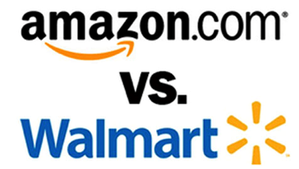
![walmart-2[1]](http://img.over-blog.com/500x267/4/34/14/20/2013-3/walmart-2-1-.jpg)
